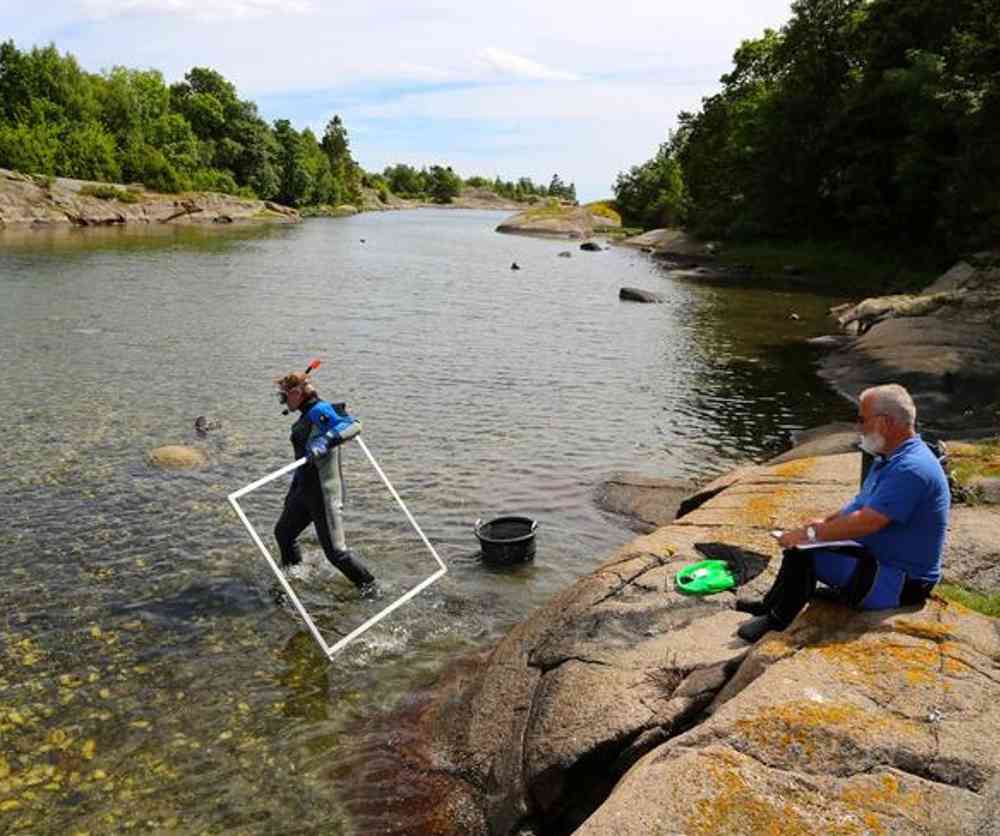Many foreign species come to Norway, but only a few are able to establish themselves. If the alien species grows large in numbers and manages to outcompete local species, it is called an invasive species. In Norwegian waters, king crab, snow crab, American lobster and Pacific oyster are the foreign species causing the most concern today.
Arrive on vessels
- Species spread in two main ways. A species can expand its area of coverage due to improved living conditions. The edible crab, which has spread north to the North Cape, is one example. Other species have been actively moved from one continent to another, says Jan H. Sundet, senior researcher at the Institute of Marine Research.
These foreign species arrive with ballast water, or as growth on the ships’ hull. Species can also spread by escaping from aquaculture facilities, or by someone letting them escape into the sea.
Different species create different problems
The king crab emigrated to the coast of Finnmark after having been released in the Murmansk fjord in the 1960s. The crab alters the bottom fauna by consuming large amounts of bottom fauna. East of the North Cape, there is long-term restricted fishing for the king crab. West of the North Cape, king crab fishing is unrestricted.
- It has worked well. We are unable to stop the crab from spreading westward, but we can refine the crab population and slow down the speed with which the crab is spreading, Sundet says.
The snow crab is an arctic species and keeps further to the north in the Barents Sea. One does not know for certain whether the snow crab has been released here or if the species has immigrated from the sea areas around the Bering Strait. The crab can have the same effect on the bottom fauna as the king crab. The Ministry of Food and Fisheries will shortly have an overview of the measures for the management of snow crab on the Norwegian continental shelf in the Barents Sea.
The American lobster, which has probably been released from the import of living lobsters, has been found in several locations along the coast of southern Norway.

The Institute of Marine Research has been monitoring Pacific oyster along the Skagerrak coast since 2008. Photo: Espen Bierud / IMR.
"We want to eradicate the American lobster because it represents a threat to the European lobster," says Anne Kjos Veim, section head of the Directorate of Fisheries.
The Pacific oyster is a so-called «engineering species», which can change the habitat where it has established itself. Soft sea bottom changes into hard sea bottom. The Pacific oyster can oust and replace the blue mussel and the Norwegian flat oyster, while their sharp shells ruin bathing and leisure areas.
How to keep them in check
In practice, it is impossible to eradicate foreign species once they have settled in the ocean. The most important measure is to prevent new species from coming here. The IMO (International Maritime Organization) Ballast Water Convention, which comes into force on 8 September 2017, is a measure.
Once the species has established itself in an area, the only option is to limit the number of individuals. Because all the four species represent a good food source, both long-term commercial harvesting, and more drastic attempts to eradicate the invasive species, are currently discussed issues.
There is commercial fishing for king crab and snow crab. While no plan for the eradication of the American lobster currently exists, the Directorate of Fisheries wishes to open for commercial fishing of the Pacific oyster.
- The extreme quantities should be commercially exploitable. Shells that cannot be used can be dumped into deep water. There the oyster is unlikely to survive. There are also other possibilities, for example utilising the lime of the oyster shells for soil improvement, Kjos Veim says.
It is not realistic to expect that all the oysters will be consumed raw, but creative entrepreneurs may benefit from using oysters and oyster shells for new products. Inspiration can be gained from the work of four young girls at Kragerø secondary school, who have developed a new oyster sauce.
- Their oyster sauce, Perledråper (“Drops of Pearl”), contains 20 percent oyster, which is a higher oyster content than the sauce you buy in the shop. Cooks and chefs have appreciated the good flavour of the oyster, and can use it as an additive in soups and sauces, says researcher Sigurd Øines at Nofima. He was one of the people who helped the girls develop their oyster sauce.
"Both food and shell can also contain interesting components that require further research. This has already been a success with prawn shells, Øines says.
Besides harvesting, it is also possible to manually remove the Pacific oyster. The Norwegian Environmental Protection Agency has made several attempts to get rid of the Pacific oyster, in the Hvaler National Park among other places.
"We are not opposed to commercial harvesting, and our action plan also points to this option. There is a certain threat that the Pacific oyster can spread all the way to Lofoten, hence this species is very problematic. The environmental management focuses on delimiting the spread of the Pacific oyster into conservation areas, leisure areas and national parks, says Egil Postmyr, senior adviser in the Environment Directorate.
